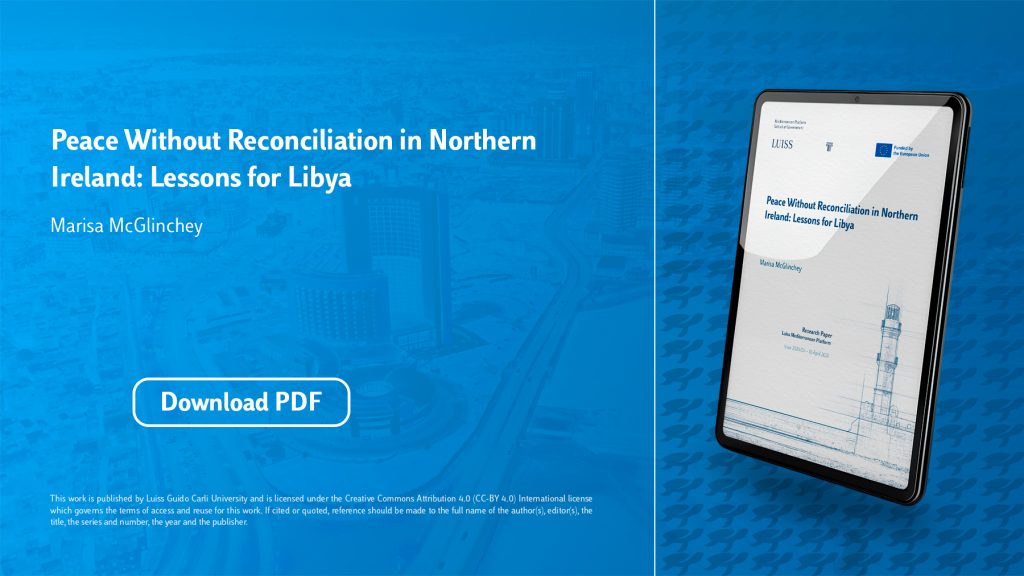- Marisa McGlinchey
Introduction
Ireland has a deeply troubled history, with violent ethno-national conflict spanning centuries. Labelled intractable and
zero-sum, the most recent phase of violence in Northern Ireland (known as ‘The Troubles’), spanning almost 30 years (1969
1994), was one of competing nationalisms. The unionist and loyalist population (mainly Protestant) seek to remain part of
the United Kingdom. The nationalist and republican population (mainly Catholic) seek, on the other hand, Irish unification
and the removal of the border between the North and South of Ireland, which was established by partition in 1921.5
The main parties to the 1969-1994 Northern Ireland conflict included the Provisional Irish Republican Army (thereafter
‘Provisional IRA’ or ‘PIRA’) 6 who were engaged in a conflict with the British Army. The PIRA viewed the conflict as colonial
in nature and called for the British government to withdraw from Northern Ireland, claiming that Britain had no legitimate
ownership of any part of Irelandwished for the.7 The British Army had been deployed to the streets of Northern Ireland in
1969, originally as a peace-keeping force, but were quickly viewed by the Catholic nationalist and republican population as
the enemy. The Provisional IRA and the British Army engaged in ongoing street gun battles, and PIRA snipers carried out
attacks on British Army barracks.
Other republican paramilitary groups included the Irish National Liberation Army (INLA), whose political wing was the Irish
Republican Socialist Party (IRSP), the Official IRA and the IPLO. There are also dissident republican groups including the
Continuity IRA (formed 1986) and the Real IRA (formed 1997).
Republican and loyalist paramilitaries were also engaged in violent conflict with each other. The main loyalist groups were
the Ulster Volunteer Force (UVF, formed 19668), the Ulster Defence Association (UDA, formed 1971) and the Ulster Freedom
Fighters (UFF, formed 1971).
The PIRA also described their role as defending and protecting Catholic areas from loyalist attacks: incidents included the
burning of Bombay Street in West Belfast in 1969. The PIRA was further engaged in combat with the mainly Protestant
police force, the RUC, which was formed in 1922 and superseded in 2001 by the Police Service of Northern Ireland (PSNI).
Allegations of collusion between the RUC and loyalist paramilitaries have prompted a number of inquiries.
Republican and loyalist paramilitaries were also engaged in violent conflict with each other.The conflict was protracted and
bloody, claiming over 3,700 lives including many civilians. Northern Ireland suffered economically and there were also a
number of economic hits in Britain by the PIRA, particularly in London.9
This phase of violent conflict between 1969 and 1994 was brought to an end with the historic Good Friday Agreement (GFA)
in 1998, also known as the Belfast Agreement. Agreement was reached between the British and Irish governments and most
of the main political parties in Northern Ireland.10 Crucially it was endorsed by referendum.11
The Agreement established largely consociational12 power-sharing institutions. These included all the main political
parties: UUP, SDLP, Sinn Féin, DUP, Alliance Party, PUP, and the Women’s Coalition. The central element of the GFA was
the principle of consent, which states that it is for the people of Northern Ireland to decide their constitutional future – i.e.

